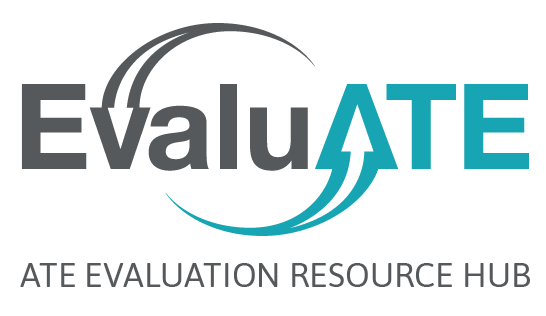
As a new ATE PI, I never made the connection between the ATE Survey, the project evaluations, and my annual report. They just seemed like three different grant reports that each asked different questions, covered different time spans, and were submitted to different people.
It wasn’t until I was awarded my full project grant and started sending my evaluator copies of my survey responses that I began to see the insights each of these provides and to use those insights to better organize and report my data. This two-part blog post shares a couple of those insights.
Organizing Participant Data
Originally, I collected data by activity and gave it to my evaluator, who would magically organize and analyze it and provide me with wonderful and informative summaries and reports.
While I found these evaluation reports extremely helpful for my project, they did not seem very useful when it came to filling out the ATE Survey. To answer the survey questions, I would find myself poring through stacks of documents and combining participant lists to sort the student information and other data by calendar year rather than by activity or academic year.
Last year I set out to find a more efficient and more useful way to meet these reporting requirements, and now I collect and organize my data by participant and by semester. This lets me use the data for my survey (by combining data from the spring and fall semesters of the same calendar year) and for my annual report (by combining fall and spring semesters of the academic year).
I record the data in an Excel spreadsheet with student names and ID numbers listed in the first two columns. Student demographic data goes in the next columns, and then each activity gets a column. Each time a student participates in an activity, an “x” is marked in their row for that activity.
This helps me keep track of student participation, and it helps me see which students are engaging in multiple activities and which are just engaging in one or two activities. Looking at that, I can assess my outreach and recruitment efforts as well as see which activities encouraged students to participate in follow-up activities.
And when it’s time to fill out the ATE Survey or my annual report, I now have all the data in one place, making it easier to sort so that I can answer the questions and provide a more detailed report. This system also helps me see trends and areas for improvement. While my evaluator is great at making sense of the data I send to him after each activity, having the basics organized in this way has made completing the ATE Survey much easier and has provided me with additional insights that make my annual report much richer.

Except where noted, all content on this website is licensed under a Creative Commons Attribution-NonCommercial-ShareAlike 4.0 International License.





 EvaluATE is supported by the National Science Foundation under grant number 2332143. Any opinions, findings, and conclusions or recommendations expressed on this site are those of the authors and do not necessarily reflect the views of the National Science Foundation.
EvaluATE is supported by the National Science Foundation under grant number 2332143. Any opinions, findings, and conclusions or recommendations expressed on this site are those of the authors and do not necessarily reflect the views of the National Science Foundation.